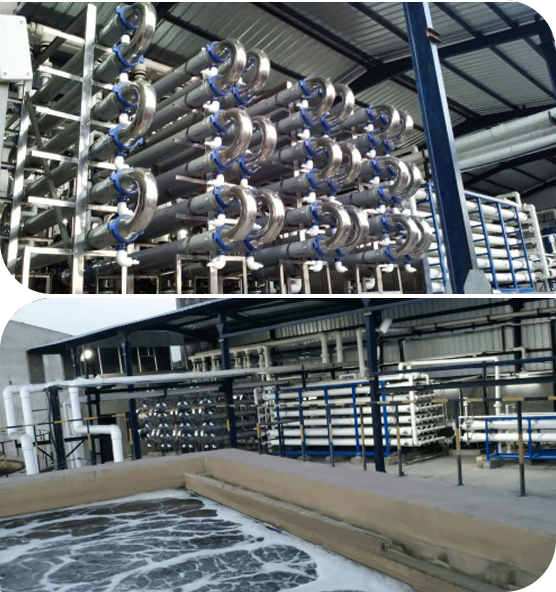
Waterman Engineers Australia is probably the main producers of Zero Liquid Discharge technique. A ZLD technique is often a procedure process which is used to eliminate many of the liquid squander from a method. The objective of ZLD h2o procedure is to lessen wastewater economically and make potable water that's fit for ordinary use. Zero discharge process is a sophisticated treatment process that comprises ultrafiltration, reverse osmosis, evaporation and fractional electro deionization. And we have been a nicely-known provider of ZLD methods.
In several Industries, including power, oil & gasoline, chemicals, mining and Some others, a large amount of wastewater is created that has to be managed. Conventionally, this discharge of wastewater is completed via a plant outfall to your surface drinking water body like an evaporation pond, or sometimes deep well injected. These procedures produce several environmental fears by the public in lots of locations of the world, as drinking water is often a scarce source and its management must be monitored. These fears have resulted inside the establishment of ZLD procedures by lots of industries to lessen their environmental footprint and boost sustainability. And, Waterman Engineers Australia are ideal ZLD suppliers you can find for this system.
Qualities OF ZERO LIQUID DISCHARGE Technique
The Houses of the Zero Liquid Discharge procedure will vary according to the distinct style and design and technology used. Nevertheless, some frequent Qualities of ZLD techniques contain:
Water Conservation: Among the main objectives of ZLD systems is to preserve drinking water by minimizing the discharge of liquid squander in the natural environment.
Substantial Water Purity: ZLD systems are designed to deliver significant-good quality water that is absolutely free from impurities and contaminants, which makes them suitable for use in several industrial processes.
Flexibility: ZLD techniques tend to be built to accommodate a wide variety of enter liquid streams, which makes them multipurpose and appropriate for use in different industries.
State-of-the-art Wastewater Remedy: Zero liquid discharge systems use Innovative wastewater therapy techniques to eliminate impurities and contaminants with the effluent, creating significant-high quality drinking water.
Squander Reduction: ZLD systems support cut down waste by minimizing the quantity of liquid squander that needs to be disposed of and by generating a concentrated, stable squander material which can be safely and securely disposed of.
Energy Efficiency: ZLD techniques is often energy-intensive as a result of substantial Electricity requirements of evaporation as well as other wastewater remedy processes. Even so, advancements in know-how are earning Zero liquid discharge systems more energy-efficient and price-helpful.
Waterman Engineers Australia manufactures Zero Liquid Discharge (ZLD) units meant to take out all liquid squander, aiming to create potable water and reduce environmental impact. Their ZLD units ordinarily include things like ultrafiltration, reverse osmosis, evaporation, and fractional electro deionization. Essential technologies used are Slipping Film Brine Concentrators, Compelled Circulation Crystallizer, and Some others, by using a two-stage means of pre-concentration and evaporation/crystallization to recover and reuse drinking water. These methods are adaptable to different industries, emphasizing drinking water conservation, higher h2o purity, waste reduction, and Electrical power effectiveness. Technological specs are varied and customizable, thinking of aspects like h2o source, stream price, and feed drinking water quality.
The need for Zero Liquid Discharge (ZLD) units arises with the requirement to address environmental problems associated with drinking water scarcity and air pollution. In industries like energy, oil & gasoline, and mining, broad amounts of wastewater are generated. Ordinarily, this wastewater is discharged into bodies of h2o, creating pollution and depleting cleanse h2o resources. ZLD programs intention to attenuate these impacts by managing and recycling wastewater inside the commercial approach, thus conserving h2o, reducing waste, and marketing sustainability.
When it comes to the complex requirements of the Zero Liquid Discharge (ZLD) process, vital areas to concentrate on consist of the water source it'll deal Zld System Manufacturer Zero Liquid Discharge System with, the method's movement price, the quality of feed h2o, the levels of cure included, the recovery price of water, methods for focus disposal, elements of development, working circumstances, and method automation and control. These things make sure the method's effectiveness, longevity, and effectiveness in treating and recycling industrial wastewater.
Zero Liquid Discharge (ZLD) crops offer you Advantages such as h2o conservation, waste reduction, and air pollution prevention, contributing to environmental sustainability. They are applicable in industries like electric power era, oil and fuel, chemical substances, and mining, where they assist in handling industrial wastewater correctly, lowering the ecological footprint, and complying with strict environmental restrictions. These methods are important in places struggling with water scarcity and for industries aiming to boost their sustainability and operational performance.
FAQs for any Zero Liquid Discharge (ZLD) procedure usually handle its operational principles, Value-success, upkeep necessities, environmental impact, applicability across a variety of industries, and regulatory compliance. These thoughts assist end users have an understanding of the method's Positive aspects, technological requires, and suitability for his or her particular wastewater management wants.
1. Zero Liquid Discharge (ZLD) is often a wastewater procedure procedure created to remove all liquid waste.
two. The system's components are influenced by the specific industrial procedure, wastewater composition, and regulatory needs.
3. Effluent remedy plants eliminate pollutants from textile effluents to stop environmental contamination.
4. Advantages consist of h2o conservation, air pollution reduction, and regulatory compliance.
5. The aim is to minimize environmental impact by recycling h2o and lessening squander.
6-nine. Effluent cure vegetation are stages in wastewater procedure: Most important (Bodily separation), secondary (biological treatment), and tertiary (Highly developed cure).
10. Device operations consist of filtration, sedimentation, Organic treatment method, and disinfection.
11. Restricting parameters are aspects that impact the procedure's effectiveness, like pH and contaminant focus.
12. Design things to consider contain flow amount, effluent composition, and wanted quality of dealt with water.